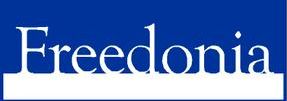Home > Press > World Nanomaterial Demand to Reach $4.2 Billion by 2011
 |
Abstract:
Nanomaterials have established an appreciable market presence -- $1 billion -- mainly in the United States, Western Europe and Japan. By 2011, world demand for nanomaterials is forecast to reach $4.2 billion. In the longer term, the global market is projected to swell to $100 billion in 2025. By then, use of nanomaterials will have expanded well beyond their initial outlets, such as wafer-polishing slurries used in semiconductor manufacturing, high performance super strong plastic composites, transparent sunscreens and other personal care products, self-cleaning glass, and high-end sports equipment. These and other trends, including market share and company profiles, are presented in "World Nanomaterials," a new study from The Freedonia Group, Inc., a Cleveland-based industry market research firm.
World Nanomaterial Demand to Reach $4.2 Billion by 2011
CLEVELAND, OH | Posted on September 28th, 2007The nanomaterials making the greatest initial commercial impact are the less exotic but more widely used nanoscale oxides and metals. Silica, titanium dioxide, alumina, iron oxide, zinc oxide and other nanoscale versions of conventional materials are now finding use in cosmetics, paint, construction materials and electronic equipment. Eventually, these materials will also be widely used in such applications as drug delivery systems, creating opportunities for safer and more effective dosages of medication to treat cancer and other diseases. In the next decade or two, some of the relatively novel nanomaterials, such as nanotubes and dendrimers, will account for a larger share of overall nanomaterial usage.
Although the electronics market is currently the largest outlet for nanomaterials, it is anticipated that health care applications will eventually be the leading global market, reaching $50 billion by 2025. Use of nanomaterials in health care will be concentrated in the US and Western Europe, where a large share of the world's pharmaceutical products are manufactured. France and Switzerland are among the countries at the forefront of the development of nanomaterial use in pharmaceutical applications. Electronics will remain the leading outlet for nanomaterials in the Asia/Pacific region, as a large and ever-growing proportion of electronics production occurs there. Although Japan is currently the largest market in Asia for nanomaterials, China is the fastest growing market and will eventually become the largest in the region. While smaller in terms of global market size, a number of other nations will offer opportunities for nanomaterials.
####
For more information, please click here
Contacts:
Corinne Gangloff
440-684-9600
Copyright © Market Wire
If you have a comment, please Contact us.Issuers of news releases, not 7th Wave, Inc. or Nanotechnology Now, are solely responsible for the accuracy of the content.
| Related News Press |
Announcements
![]() Rice membrane extracts lithium from brines with greater speed, less waste October 3rd, 2025
Rice membrane extracts lithium from brines with greater speed, less waste October 3rd, 2025
![]() Researchers develop molecular qubits that communicate at telecom frequencies October 3rd, 2025
Researchers develop molecular qubits that communicate at telecom frequencies October 3rd, 2025
![]() Next-generation quantum communication October 3rd, 2025
Next-generation quantum communication October 3rd, 2025
![]() "Nanoreactor" cage uses visible light for catalytic and ultra-selective cross-cycloadditions October 3rd, 2025
"Nanoreactor" cage uses visible light for catalytic and ultra-selective cross-cycloadditions October 3rd, 2025
Interviews/Book Reviews/Essays/Reports/Podcasts/Journals/White papers/Posters
![]() Spinel-type sulfide semiconductors to operate the next-generation LEDs and solar cells For solar-cell absorbers and green-LED source October 3rd, 2025
Spinel-type sulfide semiconductors to operate the next-generation LEDs and solar cells For solar-cell absorbers and green-LED source October 3rd, 2025
![]() Rice membrane extracts lithium from brines with greater speed, less waste October 3rd, 2025
Rice membrane extracts lithium from brines with greater speed, less waste October 3rd, 2025
|
|
||
|
|
||
| The latest news from around the world, FREE | ||
|
|
||
|
|
||
| Premium Products | ||
|
|
||
|
Only the news you want to read!
Learn More |
||
|
|
||
|
Full-service, expert consulting
Learn More |
||
|
|
||








